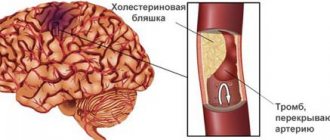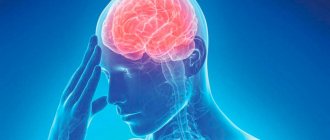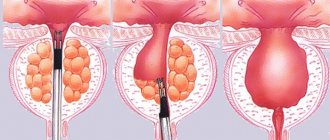The first signs of HIV disease: symptoms in the early stages
In men, early symptoms include red or discolored spots on the skin. They are usually visible after 12-14 days from infection. In rare cases, when the immunity of the infected person has been weakened by cancer, frequent exacerbations of herpes virus infection, etc., the first signs can be observed 14-21 days from the moment of infection. The rash comes in the following varieties.
- Petechial rash. Petechiae are tiny spots on the skin caused by hemorrhages.
- Urticarial rash. The rash resembles hives.
- Papular rash. Signs are skin formations that are empty inside.
Within a few weeks, the first signs of HIV disease appear, which are similar to ARVI, influenza and acute respiratory infections. The body temperature increases, the lymph nodes in the groin, armpits and neck become large, regular headaches appear (other possible causes of headaches are written here). Other symptoms in men at an early stage are deterioration in well-being and mood, development of a depressive state.
The body becomes exhausted as it tries to fight the pathogen, which leads to the desire to sleep. The brain lacks energy, the first signs of which are a decrease in the efficiency of intellectual activity. The liver and spleen increase in size. Also, HIV infection in men is determined by such a symptom as diarrhea.
Is it true that a condom does not protect completely?
So far, the only thing more reliable than a condom in preventing STIs is the absence of any sexual contact. WHO calls
male condoms are approximately 80–85% effective. Gaps in effectiveness are mainly due to improper storage and use of products No. 2.
– It is worth understanding that 80% is average data from the entire planet. The statistics are mainly worsened by third world countries, where used condoms are washed, dried and reused, says Nikolai Lunchenkov.
From time to time you can hear that latex and other materials allow viruses to pass through, but an infectious disease specialist calls this a myth and urges not to believe in it. The Fact Sheet for Public Health Personnel from the US Centers for Disease Control and Prevention (CDC) states that latex condoms provide an impenetrable barrier to particles the size of STIs.
After all, most condoms are coated with a lubricant that can fill hypothetical micropores.
Previously, Roskachestvo examined the quality of condoms. See the results HERE
.
Symptoms of the disease after a month
In the body of men, the virus continues to develop, so symptoms at an early stage appear more clearly. However, during the incubation period, a serological window occurs when even specialized laboratory tests cannot determine the first signs.
The first signs of HIV are similar to other diseases. The presence of the disease is confirmed based on information obtained through tests. It is necessary to contact diagnostic centers at an early stage at the following first signs or symptoms.
- A slight and prolonged increase in normal body temperature.
- Loss of body weight in the absence of an important factor.
- Muscle weakness, runny nose, sore throat and other signs of a cold.
- Long-term infectious problems (therapy is carried out by an infectious disease specialist).
- Rash on the body, particularly in the armpit area.
- Psychological problems: depression, apathy and irritability (the help of a psychologist is recommended).
- Recurrent mycosis (fungal infection) of any location.
- Constant herpes and lichen.
The symptoms resemble other diseases, however, in any case you should consult a doctor.
In case of a positive diagnosis, therapy will be prescribed that will help the man support the immune system at an early stage of the problem and avoid many serious problems.
BUZ UR "URC AIDS and IZ"
HIV (human immunodeficiency virus) is the virus that causes AIDS. HIV attacks the immune system, destroying white blood cells that help the body fight infection and disease. The test is the only reliable way to determine whether you have HIV. The following are symptoms that may be a warning that you have an infection.
Method 1 of 3: Identifying Early Symptoms
1
Determine whether you experience extreme fatigue without an explainable reason.
Fatigue can be a sign of a wide variety of illnesses, and is also a symptom in people living with HIV. This symptom shouldn't cause you more concern if it's the only one you feel, but it's worth thinking about in the future.
- — Severe fatigue is not a feeling when you just want to sleep. Do you feel tired all the time, even after getting a good night's sleep? Do you take naps during the day more often than usual and avoid strenuous activities because you feel low on energy. This type of fatigue is a cause for concern.
- - If such a symptom persists for more than several weeks or months, you should undergo testing to rule out HIV.
2
Monitor your temperature or excessive night sweats.
These symptoms often occur in the early stages of HIV, during what is called the primary or acute stage of HIV infection. Again, many people do not have these symptoms, but those who do usually feel them 2-4 weeks after contracting HIV.
- — Fever and increased sweating are symptoms of the flu and the common cold. If it's a cold season or a flu epidemic, you may be sick with these diseases.
- — Chills, muscle pain, sore throat and headache are also symptoms of flu and colds, but can also be signs of early HIV infection.
3
Check for swollen tonsils in the throat, as well as lymph nodes in the armpits and groin.
Lymph nodes become swollen as a result of infection. This does not happen to everyone who has early HIV, but among those who do, these are the most common symptoms.
- — With HIV infection, the lymph nodes in the neck usually swell more than the nodes in the armpits and groin.
- - Lymph nodes can become swollen as a result of other types of infections such as colds and flu, so further testing is necessary to make a diagnosis.
4
Be aware of cases of nausea, vomiting and diarrhea.
These symptoms may also be a sign of early HIV infection. Get checked if such symptoms persist for a long time.
5
Pay attention to sores in the mouth and genitals.
If mouth ulcers occur along with other symptoms already mentioned, and especially if you have not usually had mouth ulcers before, this may be a sign of early HIV infection.
Ulcers on the genitals are also a sign that HIV infection may have occurred. Method 2 of 3: Identifying Progressive Symptoms
1
Don't rule out a dry cough.
This symptom occurs in the later stages of HIV, sometimes even for many years after infection, when the virus was latent in the body. This seemingly harmless symptom is easy to miss at first, especially if it occurs during allergy or flu season or during the cold season. If you have a dry cough and cannot get rid of it with antihistamines or an inhaler, this could be a sign of HIV.
2
Look for unusual spots (red, brown, pink or purple) on the skin.
People in the later stages of HIV often have a skin rash, especially on the face and torso. The rash may be inside the mouth or nose. This is a sign that HIV is turning into AIDS.
- — Flaky, red skin is also a sign of late stage HIV. The spots can be in the form of boils and bumps.
- — A rash on the body is usually not accompanied by a cold or fever. Accordingly, if you alternately experience such symptoms, consult a doctor immediately.
3
Pay attention to pneumonia.
Pneumonia often affects those whose immune systems are weakened for various reasons. People with late-stage HIV are more likely to get pneumonia when exposed to germs that don't usually cause such a serious reaction.
4
Check for thrush, especially in the mouth.
The last stage of HIV usually causes thrush in the mouth, called stomatitis. It appears as white or other unusual spots on the tongue or inside the mouth. This is a warning sign that the immune system cannot effectively fight the infection.
5
Examine your nails for fungus.
Yellow or brown nails that are cracked or chipped are a common sign of late-stage HIV. Nails become more susceptible to fungi, which the body is normally able to fight off.
6
Determine if you are experiencing rapid weight loss for an unknown reason.
In the early stages of HIV, this can be caused by severe diarrhea; in later stages, it can be caused by “atrophy,” a strong reaction of the body to the presence of HIV in the body.
7
Be careful with cases of memory loss, depression or other neurological problems.
In the final stages, HIV affects the cognitive functions of the brain.
These symptoms are serious in themselves and should be investigated in any case. Method 3 of 3: HIV Data
1
Find out if you are at risk.
There are several conditions that put you at risk of contracting HIV. If you experience such situations, then you are at risk:
- — You had unprotected anal, vaginal or oral sex.
- — You shared needles and syringes with other people.
- - You have been diagnosed or treated for sexually transmitted diseases (STDs), tuberculosis, or hepatitis.
- “You received a blood transfusion between 1978 and 1985, these are the years before they started testing blood to prevent the transfusion of contaminated blood.
2
Don't wait until symptoms appear to get tested.
Many people with HIV do not know they have it. The virus can remain in the body for more than 10 years before symptoms appear. If you have reason to suspect that you have been infected with HIV, do not refuse testing because you have no symptoms.
3
Take an HIV test.
This is the most accurate method for detecting HIV. Contact us at: Izhevsk, st. Truda 17a, tel. or to one of our zonal centers located in the cities of Glazov, Votkinsk, Sarapul, Mozhga, as well as in the villages of Uva and Igra.
- — Testing is simple and absolutely FREE.
- — If you have been tested for HIV, do not let fear prevent you from getting the test results. Information about whether you are infected or not will change your lifestyle or way of thinking.
Adviсe
- — If you are in doubt about whether to do the analysis or not, do it. This is the only correct and safe action for both you and others.
- — HIV is not transmitted by airborne droplets or food. This virus does not live long outside the body.
How the disease develops: main stages and timing of manifestation
HIV in men has several stages. Let us stop and briefly characterize the symptoms of each of them: from the early stage to the final stage.
- First stage . The pathogen enters the body. At an early stage, the first cells are affected by the infection.
- Incubation stage. The duration of the early stage is from 3 months to six months. There are so few antibodies that it is impossible to determine the presence of the disease. Other early signs are also mild.
- Stage of primary manifestations . Continues for several years after the formation of antibodies in the body. The first signs are that a person is sick with the flu several times or has similar problems of a protracted nature - up to 2 weeks.
- Latent stage . Duration - 3-20+ years. Men do not show any symptoms. The pathogen slowly kills the immune system.
- Secondary diseases. Various diseases develop, including infectious ones. They have a complicated course, since the immune system offers virtually no resistance.
- AIDS. The final stage, which lasts several months or years. Symptoms are oncological and infectious problems with a complex course. Diseases often appear that are not typical for an organism with a healthy immune system.
If you take into account the first signs and identify the disease at an early stage, it is easier to fight it.
Basic mechanisms of development of HIV infection and AIDS
The main target of HIV is CD4 lymphocytes, which play an important role in the formation of human immunity. After initial infection, HIV remains in the person's body for the rest of his life. Constant multiplication of the virus (replication) occurs in the lymphoid organs throughout the entire period of HIV infection. As a result of the action of HIV, lymphoid tissue is destroyed, leading to immunity disorders and progressive depletion of the immune response to a variety of pathogens. Accordingly, the body, left without a protective immune barrier, becomes unable to resist even the most harmless diseases for a healthy person. AIDS develops - the final stage of HIV infection.
How is HIV different from AIDS?
Sometimes people do not understand the difference between HIV and AIDS and equate them. However, there is a big difference between these problems regarding the future life prospects of men.
If you start treating the first one in time, then you will be able to avoid the second one. HIV infection at an early stage leads to a decrease in the efficiency of the immune system. It can be determined through analyzes and tests after suspicion at the first signs of the disease. AIDS is a syndrome in which the body has a weak immune system.
The immunodeficiency virus enters lymphocytes, where it multiplies. This is an early stage of the disease. The cells of the immune system quickly die, and the men’s body does not have time to restore them in the required quantity - these are the first, but serious signs of a problem. If left untreated, over time there will be less than 200 lymphocytes in one milliliter of blood - and this is AIDS. Modern medicine does not allow us to completely get rid of the pathogen. However, the activity of the latter can be suppressed and a long life can be enjoyed.
Some patients undergo antiviral therapy for 30 years and remain relatively healthy.
This significant difference between HIV and AIDS gives many men a chance.
Prevention
There is no vaccine or effective preventive medication against HIV. Therefore, prevention consists of following simple safety measures:
- it is necessary to practice only safe sex (with a condom, a trusted sexual partner);
- for various manipulations, it is important to use only sterile instruments;
- annual HIV testing is important;
- mandatory examination before planning pregnancy, during registration and before childbirth.
Sources:
- HIV infection: issues of therapy. Aronin Steve I. Kazan Medical Journal No. 6, 2005. p. 433-450
- The impact of HIV infection on the quality of life of people living with HIV/AIDS. Tursunov R.A. Avicenna Bulletin No. 1, 2013. pp. 138-148
- Prevalence of HIV infection in Russia. Pirogova I.A. Bulletin of the Council of Young Scientists and Specialists of the Chelyabinsk Region No. 4, 2017
- Structural biology of HIV. B. G. Turner, M. F. Summers. Howard Hughes Medical Institute and Department of Chemistry and Biochemistry University of Maryland Baltimore County. https://www.sciencedirect.com/science/article/abs/pii/S0022283698923543?via%3Dihub
- HIV virology and pathogenetic mechanisms of infection: a brief overview. Emanuele Fanales-Belasio, Mariangela Raimondo, Barbara Suligoi, Stefano Buttò. Ann Ist Super Sanità 2010 | Vol. 46, No. 1:5-14. https://pubmed.ncbi.nlm.nih.gov/20348614/
- Molecular epidemiology of HIV. AJ Kandathil, S Ramalingam, R Kannangai, Shoba David, G Sridharan. Indian J Med Res 2005 Apr;121(4):333-44. https://pubmed.ncbi.nlm.nih.gov/15817947/
HIV treatment
The doctor determines how advanced the disease is. If the patient is at an early stage, then drugs are prescribed to combat the virus. If the disease is at the last stage, means are used to combat concomitant diseases. Doctors choose highly active antiretroviral therapy as an effective treatment for HIV infection. Treatment includes the use of a complex of drugs, which are divided into 5 groups:
- nucleoside reverse transcriptase inhibitors;
- protease inhibitors;
- non-nucleoside reverse transcriptase inhibitors;
- fusion inhibitors;
- integrase inhibitors.
The volume and number of doses is determined for men individually. Doctors take into account factors such as:
- the state of CD4 lymphocytes - cells of the immune system;
- the degree of development of the virus in the body;
- symptoms of the disease;
- complications.
Therapy is usually prescribed by immunologists or infectious disease specialists. The patient is prescribed a full course of examination. Based on the information received, the doctor determines treatment. The patient visits a medical facility for examination and monitoring of the condition. Subsequently, treatment of HIV infection with drugs continues throughout the man’s life. Taking into account the objectives of treatment, therapy is divided into three areas.
- Etiotropic approach. Another name is antiretroviral therapy. The drugs slow down the development of the virus. The most popular approach to combating the virus at any stage of the disease.
- Pathogenetic approach. The goal is to improve the efficiency of the immune system. Prescribed at the final stage of the disease. Pharmacological agents are used, in particular immunomodulators.
- Symptomatic approach. Therapy is relevant at the stage of AIDS. Prevents the development of symptoms (in particular infectious processes) and ensures the normal functioning of the body.
HIV is characterized by resistance - the ability to resist the effects of medications. In order to ensure the effectiveness of treatment, the doctor systematically examines the man. For a specialist, the level of CD4 lymphocytes and the development of the virus in the body are important. If these indicators worsen, then the doctor changes the therapy.
Treatment with 1 or 2 drugs is not effective. The virus is quickly modified and does not die due to the action of active substances. The doctor prescribes at least 3-4 medications. The patient takes medications at strictly defined times.
Doctor's advice
A blood test for HIV is mandatory during medical examinations - routine at work, medical examination, and medical examination. This analysis is taken in case of admission to a hospital of any profile, as well as when a pregnant woman is registered with the LCD. Every year, an increasing number of the population is diagnosed with HIV, which significantly increases the chances of starting treatment in the early stages of the disease.
Victoria Druzhikina Neurologist, Therapist
How to properly store and use condoms?
There are many nuances that the UK National Health Service (NHS) writes about.
Condoms should be stored in a place that is not too warm and not too cold. That is, keeping them in a car that sits in the cold at night is just as undesirable as carrying them in a trouser pocket. The optimal temperature is room temperature. Of course, products should be kept away from sharp objects that could puncture the packaging. Leaving the bag dangling loosely in a backpack or bag is a bad idea, because it can be damaged unnoticed by a collision with a bunch of keys and other things.
Before use, it is important to carefully open the package without using your teeth. When putting on a condom, press down on the accumulator to squeeze out the air from it. Gently roll the product to the base of the penis.
You should not use the same condom more than once - no matter how obvious it may sound. It was mentioned above that in some countries, repeated use is considered normal, which makes the spread of HIV in such areas particularly difficult to contain.
There is no need to put one on top of the other: contrary to expectations, the protection will be less reliable - condoms are more likely to break.
Oil-based lubricants should not be used with latex and polyisoprene condoms, as the products may break. The same can be said about any oil and Vaseline. If a woman uses vaginal suppositories (for example, for treatment), this also increases the risk of rupture. In this case, it is better to use polyurethane condoms, they are invulnerable to fat.
HIV treatment regimen and cost
There are standards for the treatment of HIV infection (see list of references). Drugs for treatment:
- Stavudin;
- Lamivudine
- Nevirapine;
- Efavirenz;
- Etravirine
- Emtricitabine;
- Indinavir;
- Maraviroc;
- Tenofovir;
- Zidovudin et al.
Initial regimen: tenofovir + lamivudine (or emtricitabine) + efavirenz. If it is impossible to use - zidovudine + lamivudine + efavirenz, zidovudine + lamivudine + nevirapine, tenofovir + lamivudine (or emtricitabine) + nevirapine
A combination of drugs is necessary to achieve a positive result from treatment. The effectiveness of the therapy is assessed by the dynamics of the immune status.
HIV infection must be treated - this effectively prolongs life, returning it almost to its original level. During therapy, the formation of protective cells increases, which prevents the disease from developing and causing complications, including death. The earlier an HIV-positive status is detected and treatment is started, the higher the chances of returning to your previous life.
The cost of treatment per patient per year depends on the treatment regimen chosen by the doctor. It ranges from 20 to 370 thousand rubles; if you have a compulsory medical insurance policy, SNILS and a passport, the purchase and issuance to the patient is carried out at the expense of budget funds.
Drugs have been developed and are being tested that are taken in the form of 1 morning tablet, rather than 3-5. A vaccine is being developed to completely destroy the virus. New drugs are in the testing stage.
Routes of infection
Getting HIV is not that easy. The virus does not enter the body through airborne droplets or a handshake. The main routes of transmission of HIV infection are as follows.
- Sexual intercourse with a person infected with HIV.
- The use of non-sterile medical instruments, in particular needles.
- Blood transfusion from a sick donor.
- Ingestion of contaminated blood or other fluid from a sick person into a wound.
- Intravenous administration of drugs with one syringe with an HIV patient.
- From mother to child.
How to protect yourself
Considering the main methods of HIV infection, doctors identify several simple rules for preventing the problem:
- Avoid casual sex. Most likely, you know a little about the sex life of a potential partner. In any case, use contraception. You can catch a dangerous virus as a result of traditional sex. But is it possible to become infected with HIV through oral or anal sex? Unfortunately, yes, so be as careful as possible.
- Use only new, sterile needles and syringes. This is often neglected by drug addicts, creating optimal conditions for the transmission of the disease. If you are donating blood or are on an IV in the hospital, make sure that the nurses only use new needles and syringes. Their inattention or your false economy are the causes of the problems.
- Be careful in beauty salons. Infection is only possible if the instruments are not disinfected and there is contact with blood. Check the first and contact experienced specialists.
- Be careful with blood transfusions. Trust only trusted medical institutions. Agree to a blood transfusion if there is no other alternative. See for yourself or ask your doctor to look at the donor’s medical record.
- Do not leave open wounds . An antiseptic and a sterile bandage prevent dust and fluids from an infected person from entering the wound. Do not be lazy to treat a small scratch yourself and seek qualified medical help in case of serious damage.
Simple rules can reduce the likelihood of catching a disease to almost zero.
HIV tests, prices, when to get tested
Tests to detect antibodies to HIV are taken 3, 6 and 12 months after the suspected infection. To carry out the tests, you need to donate blood from a vein.
If the test is carried out in a state clinic under compulsory medical insurance, it is performed free of charge. If you apply on your own, this can be done in any private clinic, the average cost is 400 rubles.
Life expectancy with early diagnosis and treatment does not differ from the life expectancy of a person without HIV infection. After an AIDS diagnosis, the patient lives 5-10 years without antiviral therapy. In severe cases - even less.
If you have doubts about HIV infection or treatment for the disease, you can ask your question to an immunologist or infectious disease specialist online, without registration and on an anonymous basis.
Useful articles on the topic: How to improve spermogram Treatment of chlamydia in men Trichomoniasis in men Inguinal hernia in men Symptoms of gonorrhea in men Acute and chronic urethritis in men
This article has been verified by a current qualified physician, Victoria Druzhikina, and can be considered a reliable source of information for site users.
Bibliography
1. https://aidsvolgograd.ru/wp-content/uploads/2017/08/Clinical-protocols-HIV-2017.pdf 2. https://pharmacta.ru/d/2015-10-30_4994.pdf https: //www.rcrz.kz/docs/clinic_protocol/2015/Therapy/Infectious%20diseases/3%20HIV%20u%20adults.pdf
Rate how useful the article was
4.1 14 people voted, average rating 4.1
Did you like the article? Save it to your wall so you don’t lose it!











